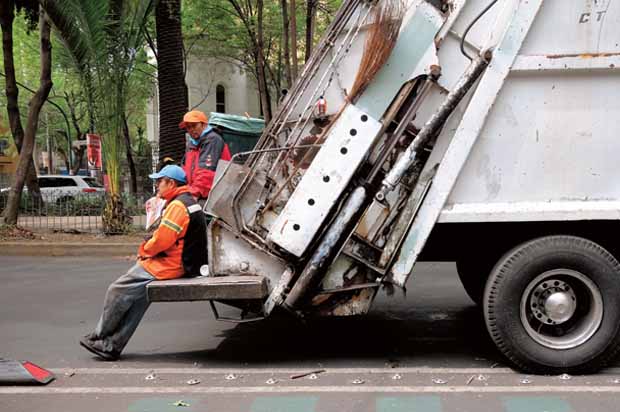A pile of rubbish hides in an opaque bin near a city sidewalk, quarantined from nearby foot traffic. While neighbours sleep or are away at work, workers efficiently empty the bins. In many of the world’s cities, waste collection services take place this way – out of sight and mind–giving residents little reason to dwell on removal infrastructures, even encouraging mindless disposal of more waste.
To overlook this is a mistake. Even in places where waste removal services might appear functional, peeking behind the scenes reveals serious concerns including overflowing landfills, illegal dumping, methane, carbon dioxide and contaminated water sources. In fact, almost 40% of global waste is disposed of unsafely in open dump sites and more than half of the world’s population lacks access to regular waste collection services. The demand for waste removal infrastructures and services will drastically increase as populations become more urban and affluent.
While governments and municipalities build physical infrastructures like landfills, recycling facilities and incinerators, service designers can provide value in encouraging waste-reducing behaviours and by making infrastructures desirable. There is now an urgent need for service designers to work with local governing bodies to design local experiences for citizens and rubbish collectors alike.
What if donating old clothes or electronics were easier than putting them in the waste bin?
Waste collection services need to incentivise diverting recyclables, compostables and reusable items because much of what goes into landfills and incinerators today does not need to. What if donating old clothes or electronics were easier than putting them in the waste bin? What if people were rewarded for buying fewer packaged goods? Efforts to minimise landfill have been diverse so far: while Germany recycled or composted 65% of its municipal waste in 2013, Chile and Turkey each recycled a dismal 1%.
A variety of service models exist for diverting waste. Cities – including Cairo in Egypt and Pune in India – rely on unofficial sorters who sift through garbage piles, redeeming metals and other materials for small payments. Cairo’s service inspired a dedicated settlement called Garbage City 70 years ago and is home to 70,000 garbage sorters. Although the model is arguably antiquated with unsafe living conditions, almost 90 per cent of the garbage in Cairo is recycled, much better than in most Western cities. And, more recently, the city of San Francisco declared a goal to generate zero waste by 2020. These examples beg the question: who is responsible for sorting waste and how might it be incentivised? Are there other ways to divert or reduce waste?
Many services rely on financial incentives, such as pay-as-you-throw models, to reduce landfill waste. Rubicon, an innovative service start-up, seeks to realign revenue models based on how much garbage can be diverted from landfills. Perhaps even more powerful than financial incentives are social incentives: LitterGram, a British mobile application leverages public shaming tactics, enabling users to photograph litter and report it to councils. In Taipei, Taiwan, waste collection trucks play a familiar and pleasant melody. The song signals everyone to bring out their rubbish and the daily event becomes a special opportunity to greet one’s neighbours.
Services, such as Taipei’s, challenge whether or not rubbish has to be a burden. What if waste collection or reduction were more celebrated? How might they be gamified to drive responsible behaviours? What if we had garbage scores similar to credit scores? Merely having new rubbish bins or shiny trucks does not guarantee public adoption; it must be supplemented with well-designed services. The future lies in collaborative effort and begs for immediate attention.

Making waste collection More efficient and less wasteful with rubicon
Rubicon matches customers with independent local haulers and enables them to schedule on- demand pickups for their rubbish. The USA-based company is disrupting traditional business models by not having its own infrastructure, trucks or landfills. This is a radical shift in a country where large companies have often dominated the market. Rubicon offers cheaper rates to work with local garbage companies and makes money by selling recyclables to a network of business partners. Haulers avoid landfills when possible, because they charge dumping fees. Not only does Rubicon aim to save companies money, but the start-up also taps into the social consciousness of companies who care about the environmental impact of their waste. Additional information at www.rubiconglobal.com



Comments (0)